copyright Jonathan Zap, 2012
The tragic situation in nearby Aurora, Colorado (I live in Boulder), with 70 people shot at a showing of The Dark Knight Rises, is not a random, incomprehensible event. When these horrific mass killings happen, however, it is common to hear people say that we may never comprehend how such things can occur. For example, at a memorial service after the Oklahoma City Bombing, the governor of Oklahoma said, “We can’t understand why this happened.” These seem like odd statements that people make on behalf of a species that has managed to project its understanding into black holes, subatomic particles, the genetic code and the edges of the universe. If we can’t comprehend the murderous actions of a member of our own species, then we damn well better keep trying.
Mass shootings, like the one that just happened in Aurora, have become a recurrent nightmare that haunts the collective psyche. As the nightmare repeats, we see patterns emerging. One, which we don’t have confirmation on yet in this case, is that the shooter will almost always turn out to be on an SSRI (selective serotonin reuptake inhibitor). For example, Colorado’s other most famous mass shooting, Columbine, was masterminded by 18-year-old Eric Harris who was on the SSRI medication, Luvox. Here’s an index of shootings and the SSRI connection someone put together: http://ssristories.com/index.php. The popular press, which depends on big pharma’s advertising money, doesn’t have much to say about this established connection. Even the literature from the drug companies admits that “homicidal and suicidal ideation” are possible side effects of SSRIs. In this article, however, we will be exploring other parts of the pattern.
Movies are a collective dream delivery technology. Some movies that have high access to the contents of the collective unconscious, are what Charles Fort called “window zones,” or portals between realms, and weird and uncanny things happen in their wake. Particularly, movies about dark, occult things have a long history of these crossover effects. An example most are familiar with is Brandon Lee, son of Bruce Lee, and his role as the star of the movie, The Crow. Brandon plays a character who has been murdered, but returns from the dead. During a stunt, a gun loaded with blanks somehow also became lodged with a dummy bullet, which a blank propelled, killing him. Other movies with equally bizarre crossover darkness: The Omen, The Exorcist, The Twilight Zone and Poltergeist.
One aspect of the present shooting that seems to cross the improbability threshold into synchronicity/ crossover territory is that the same movie company, Warner Brothers, that produced Dark Knight Rises had trailers out in movie theaters concurrently for Gangster Squad which shows gangsters breaking through a movie screen and firing at the audience. I can’t imagine a more direct emblematic image of crossover effects.
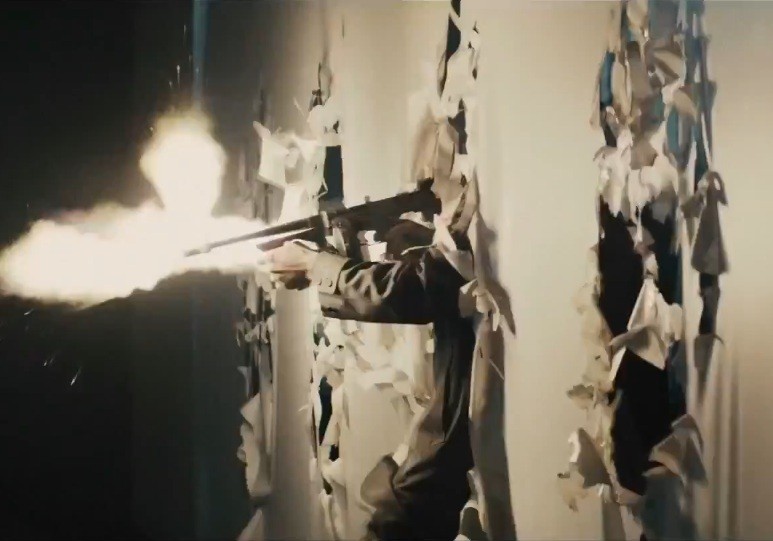
Also, in the trilogy of Batman films that concludes with Dark Knight Rising, we already had a crossover, the untimely death of Heath Ledger before the release of the previous film in the series, The Dark Knight. His uncanny portrayal of the Joker seems to have had generated crossover effects in both Heath Ledger (as we’ll examine more closely later) and the present shooter, James Holmes, who told police “I am the Joker.” and dyed his hair red to look the part.
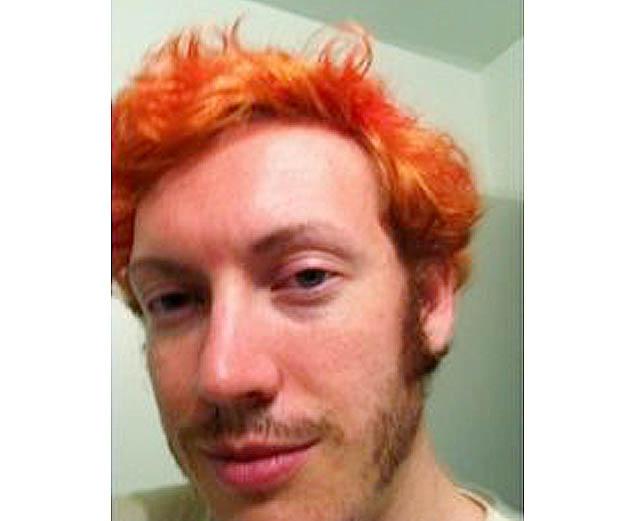
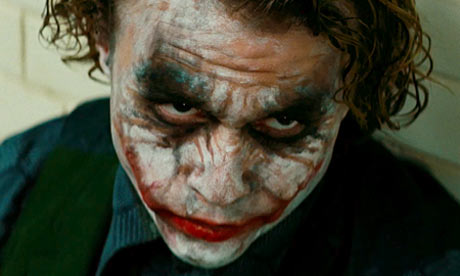
The Joker is probably the best personification cinema has ever brought us of the trickster archetype. The trickster archetype has a dominant role in paranormal phenomena, and this is brilliantly analyzed in George Hansen’s seminal book, The Trickster and the Paranormal. Hansen describes the trickster this way:
The trickster is a character type found in mythology, folklore, and literature the world over; tricksters appear as animals, humans, and gods. They have a number of common characteristics, and some of their most salient qualities are disruption, unrestrained sexuality, disorder, and nonconformity to the establishment. They are typically male. Tricksters often deceive larger and more powerful beings who would thwart them; they may be endearingly clever or disgustingly stupid—both cultural heroes and selfish buffoons.
Tricksters are boundary crossers; they destabilize structures; they govern transitions. They also embody paradox, contradiction, and ambiguity. The topic of marginality can be included here. Tricksters are marginal characters; they live at boundaries, with uncertain, ambiguous statuses.
Many of these same characteristics, as Hansen points out, are also true of the paranormal:
…psi, the paranormal, and the supernatural are fundamentally linked to destructuring, change, transition, disorder, marginality, the ephemeral, fluidity, ambiguity, and blurring of boundaries. In contrast, the phenomena are repressed or excluded with order, structure, routine, stasis, regularity, precision, rigidity, and clear demarcation.
The trickster violates the social order and crosses all expected boundaries. In the case of the Batman shooting, the trickster seems to have crossed out of the movie world into the waking life. The trickster is the natural enemy of established order, and the boundary between realities is the one he most likes to violate. As the Joker puts it in The Dark Knight,
“Introduce a little anarchy. Upset the established order, and everything becomes…chaos. I’m an agent of chaos.”
The paranormal, as Hansen points out, is fundamentally a crossover phenomenon:
ESP and PK are, by definition, boundary crossing. They surmount the barriers between mind and mind (telepathy), mind and matter (clairvoyance and PK), as well as the limitations of time (pre-cognition), and that of life and death (spirit mediumship, ghosts, and reincarnation).
Another crossover, that no one could have planned, is that the nemesis of The Dark Knight Rises is “Bane” —a character created 20 years ago, and dominating the news (before the shooting) was Mitt Romney, and the questionable actions of his company, Bain Capital. Rush Limbaugh, never known for his research (googling the character, Bane, reveals that he was created in 1993), suggested that the homophonic name parallelism was a leftist conspiracy,
“Do you think it is accidental that the name of the really vicious, fire-breathing, four-eyed, whatever-it-is villain in this movie is named Bane?”
Soon, we will likely be told that James Holmes is a schizophrenic or suffering from bipolar psychosis or something like that. My former writing mentor, novelist E.L. Doctorow, once described psychiatric jargon as the “industrial form of story telling.” We need to look past the industrial story telling of news analysts and mental health professionals. There is more in heaven and in earth than is dreamt of in the DSM-IV.
Crossover effects are especially likely to happen when creative people contact certain elements existing in the collective unconscious through the imaginal plane. Here’s an example of this crossover effect from Jeffrey Kripal’s, fascinating, elegantly written and illustrated new book, Mutants and Mystics:
It appears that the paranormal often needs the pop-cultural form to appear at all. The truth needs the trick, the fact the fantasy. It is almost as if the left brain will not let the right brain speak (which it can’t anyway, since language is generally a left-brained function), so the right brain turns to image and story to say what it has to say (without saying it). Consider how back in the late 1970s the prolific comic-book writer Doug Moench found himself writing out the real in a work of fantasy a few seconds before it became the real, in fact. I sat down with Doug in the spring of 2009. Here is the story he told me. Moench had just finished writing a scene of a Planet of the Apes comic book about a black-hooded gorilla named Brutus. The scene involved Brutus invading the human hero’s home, where he grabbed the man’s mate by the neck and held a gun to her head in order to manipulate the hero. Just as Doug finished this scene, he heard his wife call for him in an odd sort of way from the living room across the house. He got up, walked the length of the house, and entered the living room only to encounter a man in a black hood with one arm around his wife’s neck and the other holding a gun to her head: “It was exactly what I had written…it was so, so immediate in relation to the writing and such an exact duplicate of what I had written, that it became an instant altered state. The air in the room congealed, became almost like fog, and yet, paradoxically, I could see with greater clarity. I could see the individual threads of his black hood.” Doug’s emotional response to this series of events was a very understandable and natural one. He became obsessed with the black-hooded intruder for months, then years. More immediately, he found it very difficult to write, so terrified was he of that eerie connection between what he might write and what might happen: “It really does make you wonder. Are you seeing the future? Are you creating a reality? Should you give up writing forever after something like this happens? I don’t know.” (from the highly recommended book, Mutants and Mystics)
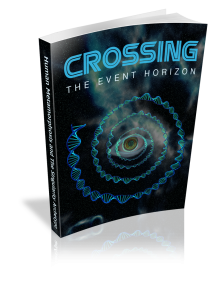 I’ve written extensively about crossover effects in my book Crossing the Event Horizon—Human Metamorphosis and the Singularity Archetype. The most relevant case I discuss concerns both versions of the movie, Village of the Damned, and the tragedy that left Christopher Reeve a quadriplegic shortly after the release of the John Carpenter, 1995 version of the film. Both the 1995 version, and the British, 1960 version, had numerous, disturbing crossover aspects. It would take too many pages to unfold that case here, but it certainly brought to the foreground of my mind that movies can be crossover portals (window zones) where there are lapses in the supposed firewall between the collective unconscious and the waking world.
I’ve written extensively about crossover effects in my book Crossing the Event Horizon—Human Metamorphosis and the Singularity Archetype. The most relevant case I discuss concerns both versions of the movie, Village of the Damned, and the tragedy that left Christopher Reeve a quadriplegic shortly after the release of the John Carpenter, 1995 version of the film. Both the 1995 version, and the British, 1960 version, had numerous, disturbing crossover aspects. It would take too many pages to unfold that case here, but it certainly brought to the foreground of my mind that movies can be crossover portals (window zones) where there are lapses in the supposed firewall between the collective unconscious and the waking world.
Movies that probe into archetypal darkness are like windows into the abyss. We feel safe as we gaze through them as though we were observing the abyss through the synthetic sapphire porthole windows of an impervious submarine. We are accustomed to think of movies as our impervious submarines and spaceships that allow us to probe the darkness without being consumed by it. For ten dollars or so we take a ride into the underworld and are usually returned safely to our seats. But as Nietzsche put it, “If you gaze overlong into an abyss, the abyss gazes back at you.”
Of course, I’m not warning people away from movies. We need movies to be portals, even if the portals sometimes become associated with instances of tragic magic. Movies are a very good example of what people mean when they say “the veil between the worlds is thinning.” Some will dismiss this statement as a New Age cliché. But this statement can be rationally defended with very unmystical examples of familiar technological effects. The veil between the world of the psyche and the waking world of seemingly solid objects has been greatly lessened by movies, video screens and search engines amongst various veil thinning technologies.
Search engines are one of the most potent veil thinners we have ever created. Whatever strange thing might be in our mind, it is only a matter of moments before we can make it appear on the shape-shifting, pixellated screen in front of us. And this, of course, is for better or worse— dark thoughts and light will both be magnified and manifested. For example, let’s say a man suddenly forms an unwholesome desire to see Japanese school girls in S&M poses. He can type the right words into Google and in a second or two his inner obsession has manifested into websites filled with images and videos offering to act as portals into this particular fetish. In a more positive case, someone with a few hundred million dollars at his disposal may create a portal to another world ( see Avatar and the Singularity Archetype), and distribute that portal throughout the planet.
There is no such thing in nature as an H-Bomb, that is all man’s doing. We are the great danger. The psyche is the great danger. – C.G. Jung
We have a moral obligation to look into the collective unconscious because one of its crossover effects is called “history.” And as Stephen Dedalus, the James Joyce character, so memorably put it, “History is the nightmare from which I am trying to awaken.” History is a crossover effect of the collective unconscious. War, every aspect of the economy, violence, mass shootings, environmental pollution—these are all psychological products. All these things originated from psyche, so any discussion of those things that doesn’t probe into psyche is superficial and misses the prime mover of all human phenomena.
There was tension in the air at the Century Movieplex here in Boulder, Colorado (nearby Aurora, the scene of the shooting) when I went to see the film on the sunny afternoon following the shooting. Two squad cars were parked out front and heavily armed and armored members of the Boulder Police Department were standing in the lobby. According to the friend who took me to the movie, when I stood up during the film to go to the bathroom, he could feel the whole movie theater take a breath.
Movies so often contain mayhem, but it is usually assumed to be safely confined to the silver screen. The presence of the police in the temple of fantasy, the multiplex, was the tangible acknowledgment by the established order that movies can project themselves past their silvery screens.
I’m not going to analyze Dark Knight Rises in detail, but here are a few impressions: I found the film to be extremely powerful and to resonate potently with some charged themes in my psyche, and no doubt the collective psyche. An implacable dark force is superbly personified by the character Bane. We see the dark force manipulate politics and use technology to put a Sword of Damocles over the heads of the citizens of Gotham City. Disturbingly, Gotham City was never before so explicitly New York City. There is even an aerial shot of lower Manhattan that shows the incomplete Freedom Tower rising from ground zero. The New York City setting stirred anxiety in me as I am a relocated New Yorker and most of my family lives in the city. Bane, the ultimate terrorist, striding the streets of the 9/11 city was an unsettling image. Many scenes on Wall Street, inside the stock exchange, and Bane seems to manipulate the resentment between the 99% and the 1%. Also resonating in my mind as I watched the film was the 2012 presidential race and the odd homophonic crossover of Bane and Bain.
The movie is brilliantly done, deserves to be seen, and resonates with American, if not international, anxieties. I absolutely do not hold the movie makers in any way shape or form responsible for what happened. The unconscious always erupts and seems to particularly favor erupting through the portal of the movie, a technological artifact that functionally bridges the imaginal realm and the waking life.
Here’s another example of a crossover effect: An unemployed artist haunts an occult book store. The books are like portals for him, and the artist has strange synchronicities and visions as he probes into them. The artist had fantasies of a thousand-year world empire, of a sinister sigil emblazoned everywhere–a reversed astrological symbol called a swastika, of a master race, and of mass extermination camps where people are put in ovens. His twisted, improbable fantasies crossed over in a most unpleasant way and this obscure, unemployed artist becomes famous for his crossover event called World War Two.
My recent book, Crossing the Event Horizon—Human Metamorphosis and the Singularity Archetype, is about a cataclysmic, but ultimately evolutionary, metamorphosis about which we are getting signals from the collective unconscious. Quite often, these signals are most powerfully delivered through movies such as 2001, a Space Odyssey. The forces of quantum metamorphosis get to speak through movies, but so also do the forces of darkness. Movies, and all media, need to express both dark and light thought forms. As change accelerates, as novelty increases, we should expect that the outer edges of light and the outer edges of darkness will both be intensified. As a Tom Robbins character put it, “You don’t get a big top, without a big bottom.” Movies will reflect both the top and bottom edges.
Consider the above to be an introduction to crossover effects with movies and other media. Now we will shift our focus to actual cases and take a look at the previous Batman movie, The Dark Knight, which was electrified by the unsettling, uncanny performance of Heath Ledger as the Joker. The best-known crossover effect for this movie was the tragically untimely death of Heath Ledger before the film opened. Less well known is that during the filming, a technician, Conway Wickliffe, a New Zealand-born special effects technician, was accidentally killed while operating a camera during a stunt.
Heath Ledger talked to many people close to him about being adversely affected by the joker. Ledger took increasing doses of prescription drugs to deal with insomnia and other problems. According to the Office of the Medical Examiner of New York, “Mr. Heath Ledger died as the result of acute intoxication by the combined effects of oxycodone, hydrocodone, diazepam, temazepam, alprazolam and doxylamine.”
According to a Daily News article entitled “Jack Nicholson warned Heath Ledger on ‘Joker’ role “:
Heath Ledger thought landing the demanding role of the Joker was a dream come true – but now some think it was a nightmare that led to his tragic death. Jack Nicholson, who played the Joker in 1989 – and who was furious he wasn’t consulted about the creepy role – offered a cryptic comment when told Ledger was dead. “Well,” Nicholson told reporters in London early Wednesday, “I warned him.” Though the remark was ambiguous, there’s no question the role in the movie earmarked as this summer’s blockbuster took a frightening toll. Ledger recently told reporters he “slept an average of two hours a night” while playing “a psychopathic, mass-murdering, schizophrenic clown with zero empathy … I couldn’t stop thinking. My body was exhausted, and my mind was still going.” Prescription drugs didn’t help, he said.
In the above, and in most descriptions of him, the Joker is described as a psychopath. As I’ve written in Foxes and Reptiles, Psychopathy and the Financial Meltdown, we seem to be in a time of awakening to the dangers of psychopathy. We’ve recently discovered that there are genetic differences in psychopaths and that they look different under functional MRI scans. Some evolutionary biologists consider psychopaths to be a subspecies. The 99% and the 1% has been criticized for its numerical inaccuracy as the elites are actually a small fraction of the 1%. But this ratio may reflect an unconscious realization about psychopathy, as psychopaths are 1% of the population. This 1% is disproportionally to be found concentrated in spheres of high finance and political power. Amongst these 1% are the Jokers and Banes who drive the nightmare of history from which we are trying to awaken.
It looks like someone has done a thorough job of writing about most of the other cases of crossover movies—The Omen, The Exorcist, The Crow and Poltergeist. Please read Cursed Films. A case of tragic crossover effects not mentioned in the above article is the 1983 movie, The Twilight Zone. According to Wikipedia: “The film garnered notoriety before its release for the tragic stunt helicopter crash which took the lives of Vic Morrow and two child actors, Myca Dinh Le and Renee Shin-Yi Chen, during the filming …” Vic Morrow played the role of a man who represented dark threads in the collective American psyche. In the movie, he is taken through something like bardos where he experiences himself in the roles of people who were recent objects of his racism and hate speech. The movie included a remake of the most haunting of Twilight Zones episodes, It’s a Good Life, in which a mutant boy creates very unpleasant crossover effects out of his imagination. Perhaps the most dramatic crossover of my life happened on the day of the premiere of this movie which I attended in NYC in 1983, but I have yet to write about it.
As a collective, we need to realize that the veil between the collective unconscious and the waking reality is always thinning and erupting. Much of what we see in the phenomenal world is an eruption of psyche. Movies are crossover artifacts that stand between the imaginal plane, the dreamtime and the waking reality. It should not surprise us that they are often crossover portals, reminding us that the firewall between the reality in which you read these words and other realities is a semi-permeable membrane.
 ZapOracle.com home to the free 720-card Zap Oracle
ZapOracle.com home to the free 720-card Zap Oracle

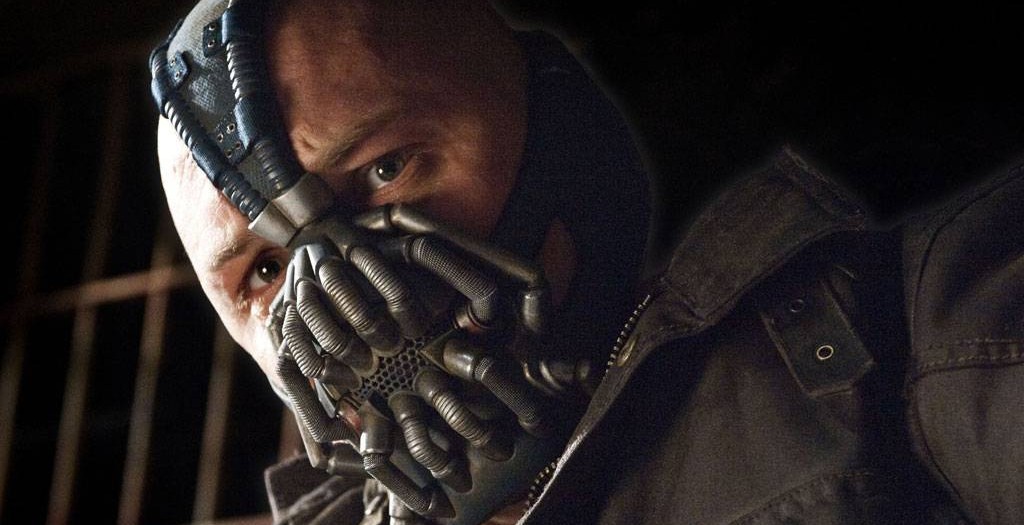
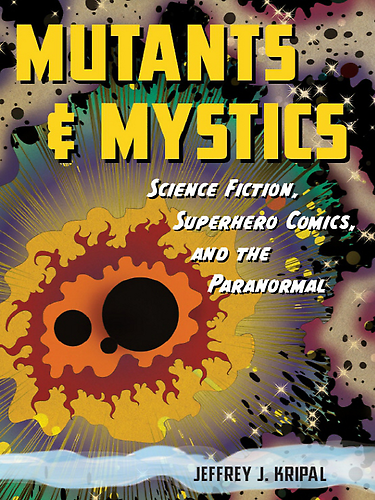



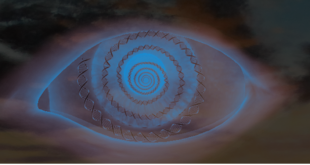
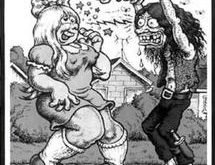

Heavy stuff. I’m finding this news hard to digest. I guess we have to be careful what we take in from pop-culture.
Thanks, JZ. I always appreciate your insights. Looking forward to reading more.
Saw the film at midnight in a packed, 20 screen theatre where every screen was showing TDKR. Everyone there was really jubilant and expectant: people in costumes and t-shirts, chattering happily. It was such a positive situation, though somehow, after the film, I wasn’t suprised to hear the news a few hours later. I stayed up all night to complete some work, and I really appreciate that you took the time, already, to write about this event. I think it will help us all comprehend it better. Why Colorado? Why this film? So this really rang true for me: “It really does make you wonder. Are you seeing the future? Are you creating a reality?” I’ll keep checking back; thanks, Jonathan.
I resonate very deeply with your analysis and sentiments. I live trying to maintain awareness and focus on the more life-affirming and “positive” edges of our collective unconscious. I am very careful what I “feed my head” and see evidence of the ramifications of carelessness. This article is “spot on” and has a chance for waking up others. Thanks for this article!
Thank you for posting your thoughts about the shooting. Much to ponder. I appreciated your description of movies as portals and I especially liked your words: “The veil between the world of the psyche and the waking world of seemingly solid objects has been greatly lessened by movies, video screens and search engines amongst various veil thinning technologies.”
The news of the Colorado shooting hit just as Norway reached the one-year anniversary of the killing of 77 people and wounding of many others in the Oslo bombing and Utøya massacre last year on Friday the 22nd of July, 2011. I felt the major impact of my memories of that day yesterday afternoon because it happened on a Friday afternoon last year, but there will be many public and private gatherings all over Norway tomorrow on Sunday the 22nd.
As a Vermonter who moved to Norway by choice in 2006, I was thrilled to witness the Norwegian Prime Minister and many Norwegians quickly leaping to empathy and calm, and that leaders were willing to look inside their own hearts for answers rather than responding outwardly with violence and fear – their choices showed me that they truly felt tremendous respect for the victims and their families. Young Norwegian Helle Gannestad famously stated “If one man can show so much hatred, think how much love we could show together.” – and she knew some of the youth who were injured or killed and said it on the day after the massacre. She inspired me beyond words…. It was especially healing to me because of my total lack of appreciation for the way the lesson of September 11th, 2001 in the U.S. was handled.
The trial of the Norwegian murderer lasted for 10 weeks this spring/summer, and the verdict will be given in August. SO many of the lessons in my own life in the past year have run in perfect parallel with the Old Guard/awakened beings, good/bad, light/dark “plays” connected with what took place on and after the 22nd of July. Your word “crossover” helped me today to understand this better. Your writings often validate my abilities to find synchronicities and meanings in events, your oracle cards are something I too could have dreamed up and I delight in them (!!), and you regularly give me inspiration to continue to look more deeply within myself. – Takk, Jonathan! 🙂
This is brilliant stuff. I found it very helpful and thank you for including other books that you’ve read or written for further explanation. I have Carl Jung’s Red book…yet, I haven’t read it. I feel maybe I worry about the commitment and maybe fear what I might find there. Most likely a further thinning of the viel.
Regarding the crossover event, Could the crossover effect of this event be to bring in more light? There has already been one shooting victim, who is alive, and who has already stated he forgives the shooter and wants to meet him.(It’s on huff post.) Another (deceased) victim’s brother made it clear we should mention the names of victims in the news more than perpetrator. Certainly news outlets mimicked this the day it was said. Are there anonymous people who are responding to this event with grace rather than with fear? Could the purpose of such a dark event, actually be to create an opportunity for change, not in gun laws or movies, or closing “windows” but to actually evolve in some way…To peer into abyss, to let the abyss in, and then somehow, find the way to greet it with light…thus, extinguishing it.
Hi, Jonathan–I just read a blog which contends that this shooting was staged in order to provide a reason for stricted gun control in our nation. The reasons this blogger submits range from Holmes’ inconspicious history to how an unemployed grad student could afford serious weapons gear. Also included are reports that Holmes did not resist police and that he warned police about his booby-trapped apartment. Hmmm. What do you think?
stricter…
I did quite a long rant on this myself. I don’t even remember where now. Maybe on FB. It was totally ignored. Hence my exodus from FB…